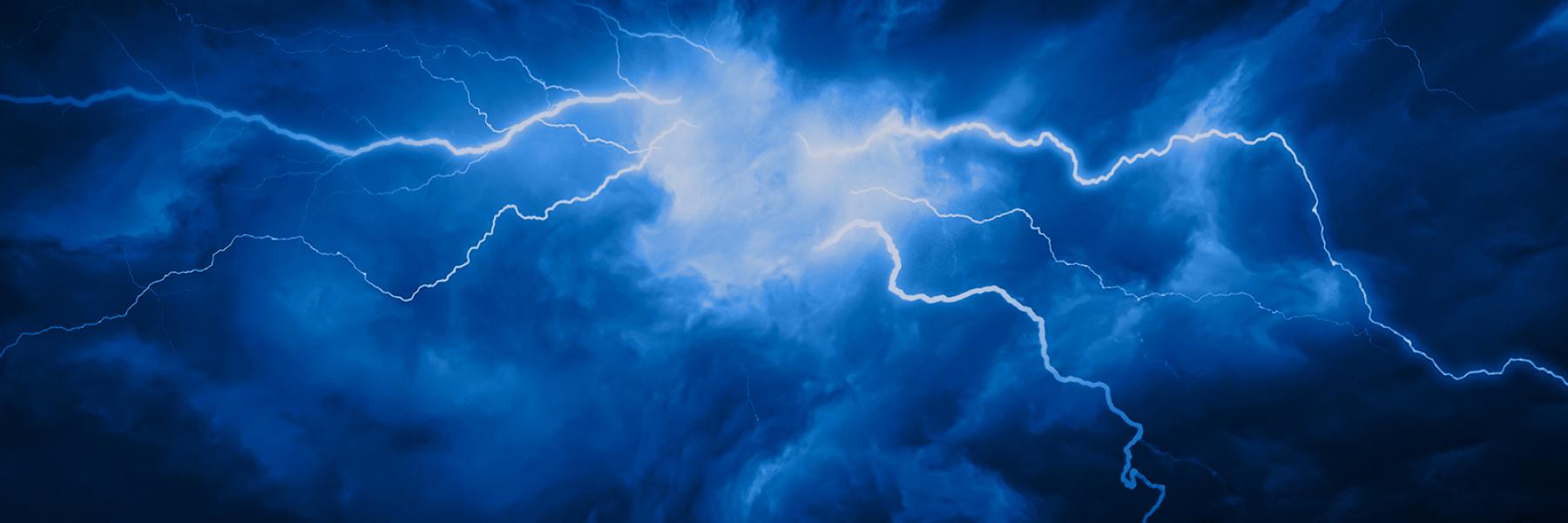
Electromagnetic Pulse
Guiding the strategy to protect critical infrastructure from EMP risk.
Extreme electromagnetic incidents caused by an intentional electromagnetic pulse (EMP) attack have the potential to damage significant portions of the nation’s critical infrastructure, including the electrical grid, communications equipment, water and wastewater systems, and transportation modes. The impacts are likely to cascade, initially compromising one or more critical infrastructure sectors, spilling over into additional sectors or geographic regions, and adversely impacting millions of households and businesses.
Overview
EMPs are associated with intentional attacks using high-altitude nuclear detonations, specialized conventional munitions, or non-nuclear directed energy devices. Effects can range from highly local to regional to continental, depending upon the nature of the incident. High-altitude electromagnetic pulse attacks (HEMP) are of most concern because they may damage or disable large sections of the national electric grid and other critical infrastructure control systems.
Any electronics system that is not protected against extreme EMP events may be subject to either the direct “shock” of the blast itself or to the damage that is inflicted on the systems and controls upon which they are dependent.
EMP Risk
Extreme EMP incidents fit into the categorization of “hard problems”—both are low probability/high consequence scenarios that challenge effective policymaking.
A HEMP attack by an adversary with basic nuclear weapons and missile capabilities may be disruptive on a regional scale but is unlikely to cause catastrophic damage to the U.S. electric grid on a continental scale. Adversaries with highly developed nuclear capabilities might cause widespread harm to U.S. infrastructure with complex HEMP attacks in the context of an escalating international conflict.
On March 26, 2019, the President signed Executive Order (E.O.) 13865 on Coordinating National Resilience to Electromagnetic Pulses. The E.O. charges the Department of Homeland Security (DHS) with coordinating national resilience, preparedness, and response from an EMP and GMD event.
The tenants of E.O. 13865 are codified in Section 1740 of National Defense Authorization Act for Fiscal Year 2020 and align to several of the requirements of E.O. 13744: Coordinating Efforts to Prepare the Nation for Space Weather Events—both of which require DHS along with other federal agencies to coordinate response and recovery efforts to mitigate the effects of EMPs and GMDs, including extreme space weather events, on critical infrastructure.
CISA is leading the Department’s effort by working with the DHS Science and Technology Directorate (S&T), Department of Energy (DOE), Department of Defense (DoD), Federal Emergency Management Agency (FEMA), and state and local utility owners/operators to concurrently understand EMP/GMD effects and footprint, and coordinate solutions to reduce risk.
Building Long-Term Resilience
CISA, through the National Risk Management Center (NRMC), works with government and industry partners to execute the Department’s EMP Strategy. The Strategy’s three goals are:
Improve Risk Awareness of Electromagnetic Threats and Hazards
Enhance Capabilities to Protect Critical Infrastructure
Promote Effective Electromagnetic-Incident Response and Recovery Efforts
Contact Us
For questions or comments, email nrmc.intake@cisa.dhs.gov




